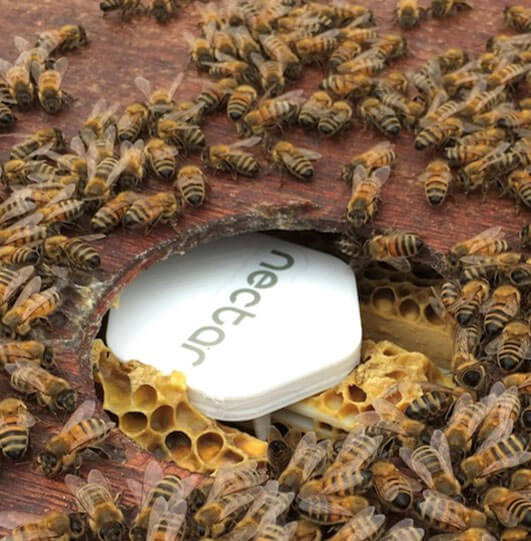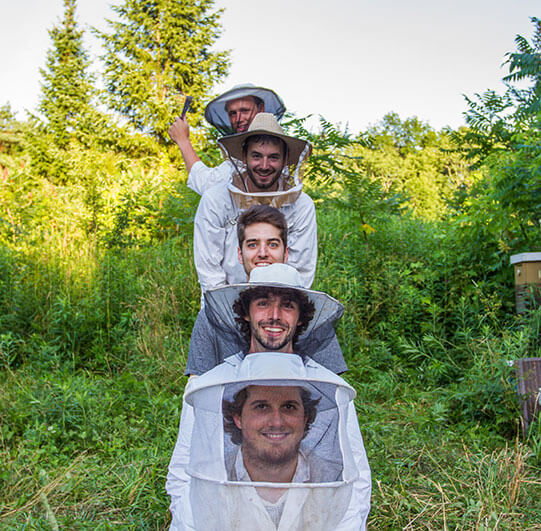Nectar: protecting bees and crops with IoT and AI
Remote sensors and cellular IoT help bee colonies to thrive
ABOUT
A local team with global impact
Nectar was founded in 2015 by Marc-André Roberge, a Montréal-based industrial designer and beekeeper. Initially, Roberge saw an opportunity to help a growing new generation of urban beekeepers by translating his years of experience into product form.
As the project has evolved, that vision has expanded significantly. Nectar now connects over 1,500 hives, providing commercial beekeepers with purpose-built hardware and advanced analytics that help to keep colonies healthy, reduce operational cost, and increase hive productivity.
With over 15 million bees now connected in the US and Canada, Nectar has set its sights on addressing the challenge of honey bee mortality beyond North America and around the world.

CHALLENGE
A crucial link in the global food supply chain
Nearly a third of the world’s crops depend on honey bees for successful pollination, making bees a crucial contributor to the global food supply. An aggregate value of over $200 billion USD in pollinated crops makes the honey bee a powerful force in the global economy as well. But for the past 20 years or more, working honey bees in North America and Europe have been dying in large numbers.
With possible causes ranging from pesticides and parasites to climate change and electromagnetic radiation, Nectar’s advanced sensor systems and sophisticated analytics give beekeepers new tools to protect their colonies and help them thrive.
SOLUTION
A new level of communication between beekeeper and hive
Nectar provides commercial beekeepers with a complete colony management system. Nectar’s wireless “Beecons” collect real-time data from active hives, including temperature, humidity, movement, and even sound frequencies. Data is then passed from multiple hives through Nectar’s solar-powered wireless BeeHub to the cloud for monitoring and analysis.
The combination of purpose-built sensors and beekeeper-developed analytics give Nectar users unprecedented insight into the lives and health of their bee colonies. That stream of information gives beekeepers a continuous view into the lives and activities of their bees, from the amount of honey available in a hive and the right time to harvest to the sudden disappearance of a queen. More advanced applications help beekeepers to ward off pets, prevent swarming behavior, and maintain ideal hive conditions through the changing seasons.
WHY SORACOM
Global cellular IoT made simple
The foraging area of a typical honey bee colony can easily extend over a radius of 2-3 miles. Since it’s not unusual for a bee farm to manage thousands of hives, preventing competition between colonies can spread these “virtual” farms out across thousands of square miles. Geographies equivalent to a small country or a US state are not unusual.
These managed hives are often placed in remote rural areas where wired infrastructure may not exist at all, and are often moved from one area to another by truck during pollination season. This makes cellular data the obvious choice for connectivity, allowing for uninterrupted connection to the cloud even when colonies are on the move.
Given the broad coverage area Nectar requires, Soracom’s multicarrier SIM means that their connected devices can count on the strongest available signal across multiple networks. And as Nectar expands beyond North America, the Soracom global SIM ensures that there’s no need to switch providers or negotiate new terms when adding new regions. One SIM truly does it all.

FUTURE PLANS
While Nectar’s current hardware collects a remarkably diverse set of beekeeping data, not every beekeeping operation has the same goals. Some focus on pollination services, others on honey production or colony growth. Future hardware releases will add to Nectar’s existing offering to allow greater adaptation to specific beekeeping objectives.
Nectar also intends to actively promote collaboration between beekeepers and the growers who depend on them for pollination services by using sensor data to act as a auditor and guarantor of pollination quality.
